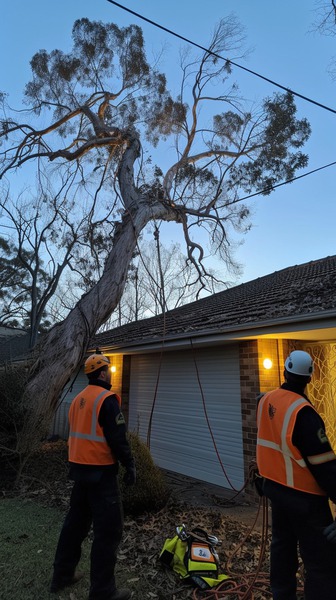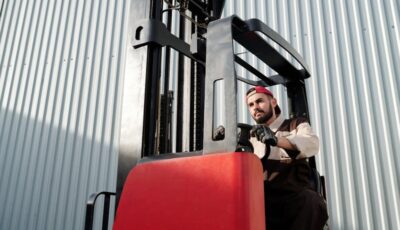
When we think about what makes our outdoor spaces so lovely, our minds often wander to the lush and sturdy trees that provide shade and scenery. But did you know that, much like us, these gentle giants sometimes need a little extra support to stay healthy and strong? That’s where Tree Bracing steps in as a quiet hero. This article will unwrap why our leafy friends sometimes require the assistance of tree bracing and how it can be a crucial element in maintaining their well-being and safety.
What Exactly is Tree Bracing?
Think of tree bracing as a kind of hug for your trees – it’s a way to give them a bit of extra support when they’re facing tough situations. Tree bracing involves installing rods and cables to reinforce the tree’s structure. This method is essential for a variety of reasons, each of which contributes directly to the health and longevity of our tree companions.
1. Preventing Potential Damage
Strong winds, heavy snow, and even the weight of burgeoning foliage can put a great deal of stress on trees, especially those with large, broad canopies or with limbs that grow at awkward angles. Without some form of reinforcement, these trees may crack under pressure, posing a risk to people, buildings, and other plants around them. Tree bracing helps to distribute the load more evenly throughout the tree, preventing limbs from breaking and falling.
2. Maintaining Tree Health and Longevity
When a tree incurs damage, it’s not just its aesthetic that suffers—the tree’s overall health can be compromised as well. Open wounds from broken limbs leave trees vulnerable to infections and infestations, which can spread to otherwise healthy parts of the tree or even to nearby trees. Bracing helps trees avoid injuries that could shorten their lifespans and impact the surrounding ecosystem.
3. Conserving the Older, Mature Trees
There’s something truly special about the grandeur of an ancient, sprawling tree. However, age can make trees more susceptible to structural issues. In these cases, bracing provides the old-timers with a prop to keep them standing tall, ensuring that they continue to grace our environment with their presence for as long as possible.
4. Human-made Conditions and Landscaping Influences
Let’s not forget that we humans have a major impact on the growth patterns and stability of trees, often unknowingly. Activities such as construction, landscaping, and even the simple act of mowing the lawn can affect the soil and roots, leading to potential instability. Bracing allows us to mitigate the unintended consequences of our actions and help trees adapt to the modified environments we create.
Now that we know why tree bracing is so pivotal, let’s explore the best time to consider this method and determine if your tree could benefit from it.
Identifying When Your Tree Needs Bracing
Signs and Red Flags
It’s always best to be proactive with our trees’ health, so here are some telltale signs to watch for:
-
Branches with tight, V-shaped angles which are more likely to split
-
Signs of cracking or splitting in the trunk or where branches join
-
Leaned or tilting trees after a storm or strong wind
-
You spot large, heavy limbs that could fall with a bit of extra push from nature
-
Previous limb failures indicating a pattern of weakness
These situations don’t necessarily spell doom for your tree. With early detection, you can take steps to provide the necessary support.
Consulting a Professional
When you’re not quite sure if your tree needs bracing or how to go about it, professional tree services in Maryland come into play. Skilled arborists can evaluate the tree’s structure and health and recommend the best type of cabling or bracing system to use. This not only helps ensure the tree’s safety but also maintains its natural beauty and integrity over time.
Timing is Key
The right time to brace a tree is often before the signs of significant damage appear. If you’ve noticed any of the red flags mentioned above, or if you suspect that your tree could be in danger of falling or splitting, don’t hesitate to get it checked out. Just like with our health, prevention is always better than a cure.
But what if your tree has already suffered damage during a storm or due to other unpreventable circumstances? Don’t worry; there are still measures that can be taken. A Severn emergency tree service can be essential in these scenarios, helping to assess the damage and determine if bracing can provide a solution or if other steps need to be taken.
Understanding Tree Bracing Techniques
Digging into the Process of Cabling and Bracing
Tree bracing often goes hand in hand with tree cabling. While bracing involves anchoring rods within the tree to support heavy limbs or split trunks, cabling targets the canopy, using flexible cables to connect limbs and redistribute weight. It’s a dynamic system that allows for natural movement while enhancing stability. These techniques often work together to give a tree the best chance at a long and sturdy life.
The Role of Materials and Installation
The materials used in bracing and cabling systems are equally as important as the techniques themselves. High-quality, weather-resistant steel is a common choice, ensuring the system remains useful for several years. As for the installation, precision is crucial. Incorrect placement can harm the tree more than help it, which is why it’s always advisable to rely on someone with experience, like those who provide tree cabling Severn services, for the installation.
Ensuring Success with Tree Bracing and Cabling
We’ve discussed the red flags, the importance of consulting professionals, and even the materials and methods involved in tree bracing. But how can you ensure that your tree bracing efforts are successful in the long term? Let us see the following:
Regular Inspections and Maintenance
Bracing and cabling systems aren’t set-and-forget solutions. Regular inspections are necessary to adjust the tension, check for wear and tear, and ensure that the tree is responding well to the added support. It’s kind of like going to the doctor for a check-up – trees need that ongoing care to stay in tip-top shape.
Integrated Health Management
Supporting a tree physically is only part of the equation. Integrating bracing and cabling with comprehensive health management – such as proper pruning, fertilization, and pest management – sets your tree up for a robust life.
Final Thoughts
Seeing our tall trees thrive, we often overlook the vital care they need, like tree bracing. This simple action significantly impacts their stability and health, helping them endure storms. Tree bracing is essential for maintaining the beauty and safety of oaks in your backyard or willows in the park. It’s a crucial yet undervalued part of tree care. By learning when and why bracing is necessary, the techniques used, and the importance of ongoing care, we can ensure our trees remain healthy and beautiful for future generations.






